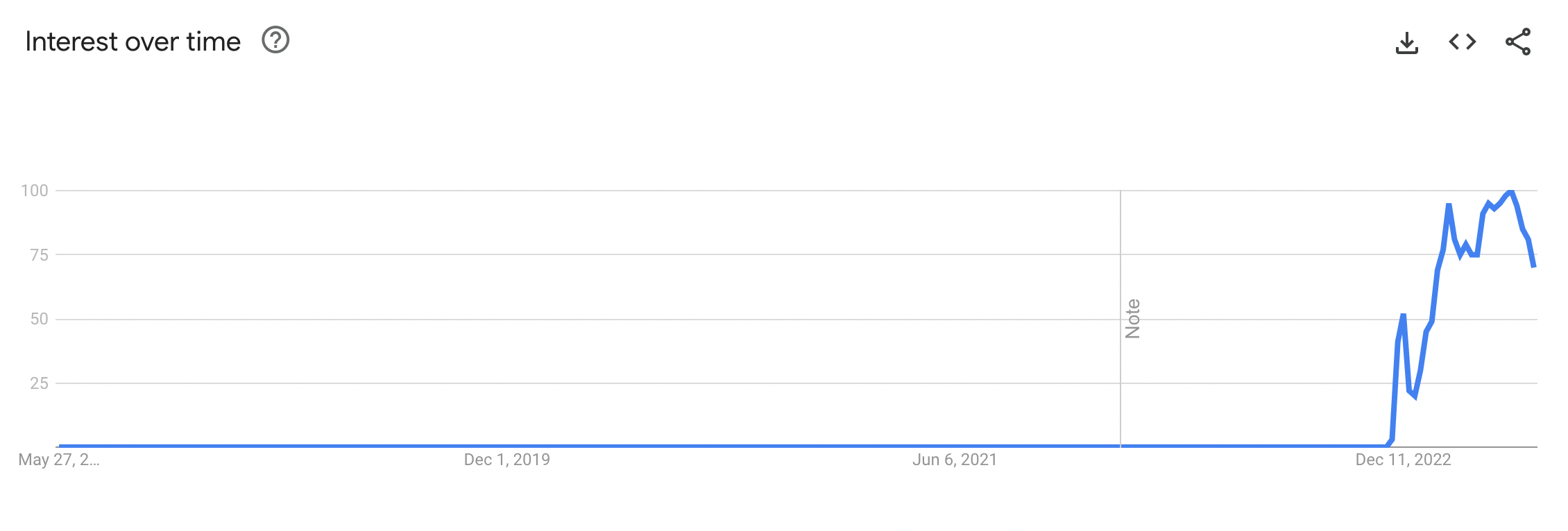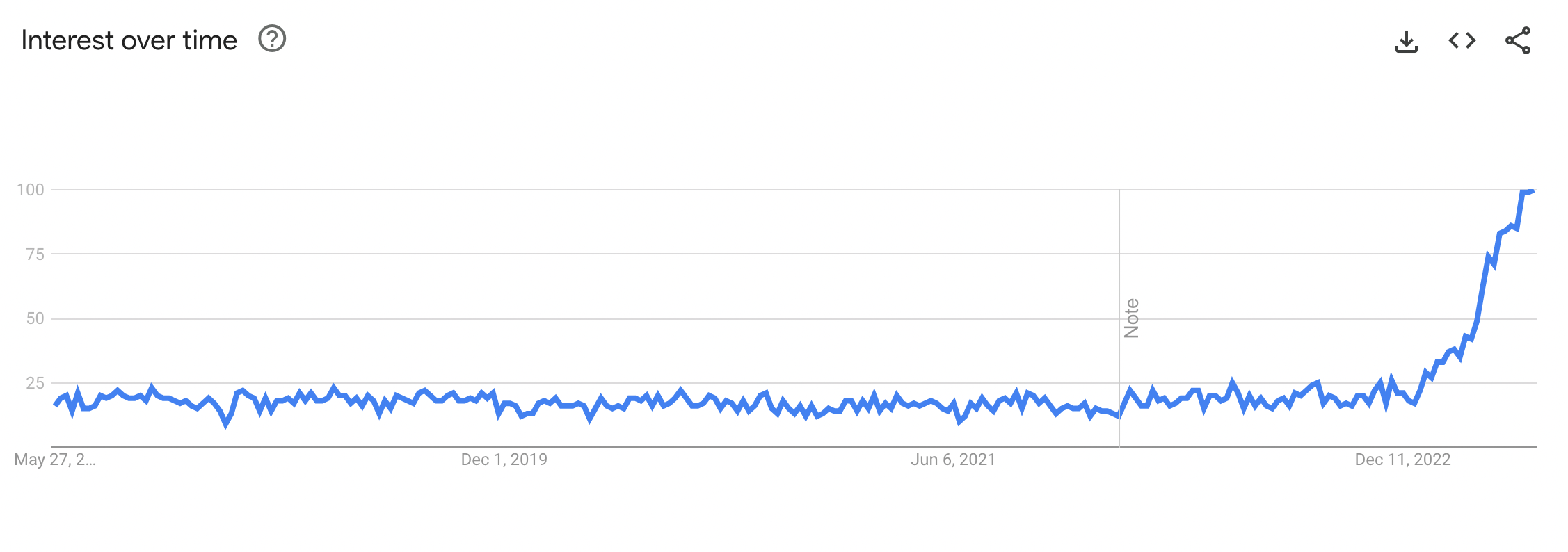If you haven’t heard of ChatGPT by now I envy your ability to live off-the-grid…

It’s safe to say that Large Language Models (LLMs) are popular. In fact, they’re so popular that we might actually see some of the hype for these tools wane in the coming months.
 Google Trends data for ‘ChatGPT’
Google Trends data for ‘ChatGPT’
But that doesn’t mean they’re going away. Far from it.
If anything they will become more ingrained in our everyday life through integration with software we use today and software yet to come. If you’re a developer and have used the OpenAI API’s, you’ve likely encountered issues with the default token limits. Things that might get in the way of building robust applications.
If you want to build something that goes beyond a simple 200 OK response from OpenAI’s servers, I’ll go into some of what I found on my own journey. What LLMs are out there, frameworks you can build apps with, and other tooling that’s commonly used in the space. As well as some of the most common use cases and apps built with LLMs.
Note: This is not a tutorial on how to use the tools, rather just a place to help guide your research on what tools to use. I’ll link to as many docs as possible, and you should consult the docs for usage instructions.
Most Popular LLMs
Which LLM to use is an important choice. But my advice if you’re just starting out would be to start with OpenAI and the GPT family. The other options listed here are valid alternatives but OpenAI can be considered the Google of language models, just as Google is renowned as the dominant force in the realm of search engines. Start with the default and expand from there as your needs change.
Just get an OpenAI api key and get started!
Note: many of these require you to be on a waiting list. Which sucks. Google, Anthropic, OpenAI, and others will make you wait, and you have to be part of a secret developers guild or some shit to get access. Whatever.

Models for Text
- OpenAI
- Google (not called Bard API, more details here)
- Anthropic
- Cohere
- AssemblyAI
- Others:
Models for Audio / TTS
- OpenAI
- Microsoft Azure
- Deepgram
Most Popular Frameworks for Working with LLMs
By using frameworks the goal is to create an “underlying orchestration engine for LLM interactions, and surface it via an API”. Not only will this do things like help you overcome things like the OpenAI api token limits, it will let you create novel and interesting things with the LLMs like agents, chatbots, and more.
Open Source
Services
Other Software for LLM App Developers
Other software that can be useful in development with LLMs are things like vector storage and retrieval systems (e.g., Pinecone, Elasticsearch), data processing and transformation tools (e.g., Apache Beam, Apache NiFi), NLP libraries (e.g., NLTK, SpaCy), machine learning frameworks (e.g., PyTorch, TensorFlow), and version control systems (e.g., Git, Mercurial) for tracking changes in the models and codebase.
LLM Use Cases
There are a ton of use cases for these types of applications. I won’t pretend to know them all. But here are three use cases for large language model applications and some products on the market today for each to help inspire you.
Customer Support Automation
Large Language Models (LLMs) like GPT-3 and GPT-4 can be used to power customer support chatbots. These chatbots can understand and respond to customer queries in a conversational manner, helping to provide quick and accurate support. For example, a customer could ask the chatbot about the status of their order, how to return a product, or for help troubleshooting a product issue. The LLM-powered chatbot can understand the customer’s intent and respond accordingly, reducing the need for human customer support agents and increasing the speed of support.
Content Generation
LLMs can be used to generate high-quality content for a variety of purposes. For example, they can generate marketing copy for a product, write articles on specified topics, or create engaging social media posts. They can also provide creative suggestions for writers and help in brainstorming sessions. This can save time for content creators and ensure a consistent tone and style across all content.
Language Translation
Large Language Models can be used for machine translation, converting text from one language to another. This can be particularly useful for global companies who need to translate their content into various languages to reach their international audience. For example, an LLM could be used to translate a company’s product documentation or user guides into multiple languages, ensuring that users around the world can understand and use their products effectively. This could also be used for translating user-generated content, such as reviews or forum posts, enabling a global community to engage with each other despite language barriers.

Best of luck in building stuff with AI and LLMs!
